News 1:
Historically, supercomputer processors have been chosen among Intel, AMD, and IBM, while ARM architecture processors were often considered too weak and largely overlooked, only appearing in consumer-grade products. However, this situation has recently changed, as the Fujitsu supercomputer Fugaku, built with the 48-core ARM processor A64FX, claimed first place in the June TOP500 world supercomputer rankings, marking the first time ARM processors have reached the top.
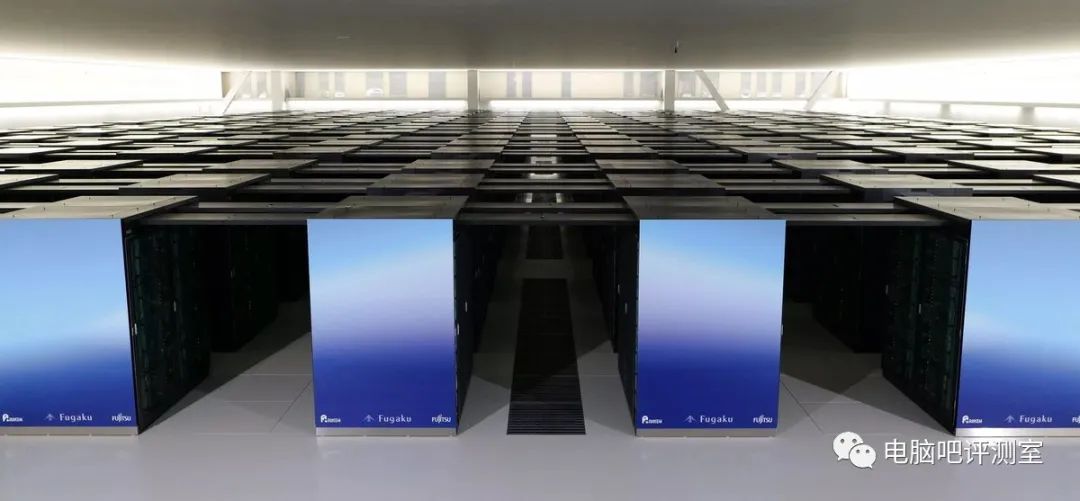
The Fugaku supercomputer, installed at the RIKEN Center for Computational Science in Japan, achieved a performance of 415.5 petaflops, far surpassing the previous first-place supercomputer, Summit, which is now in second place. Fugaku has significantly better parameters than Summit: it has 3.05 times more cores, scored 2.8 times higher in the official LINPACK test, and consumes 2.8 times more power.
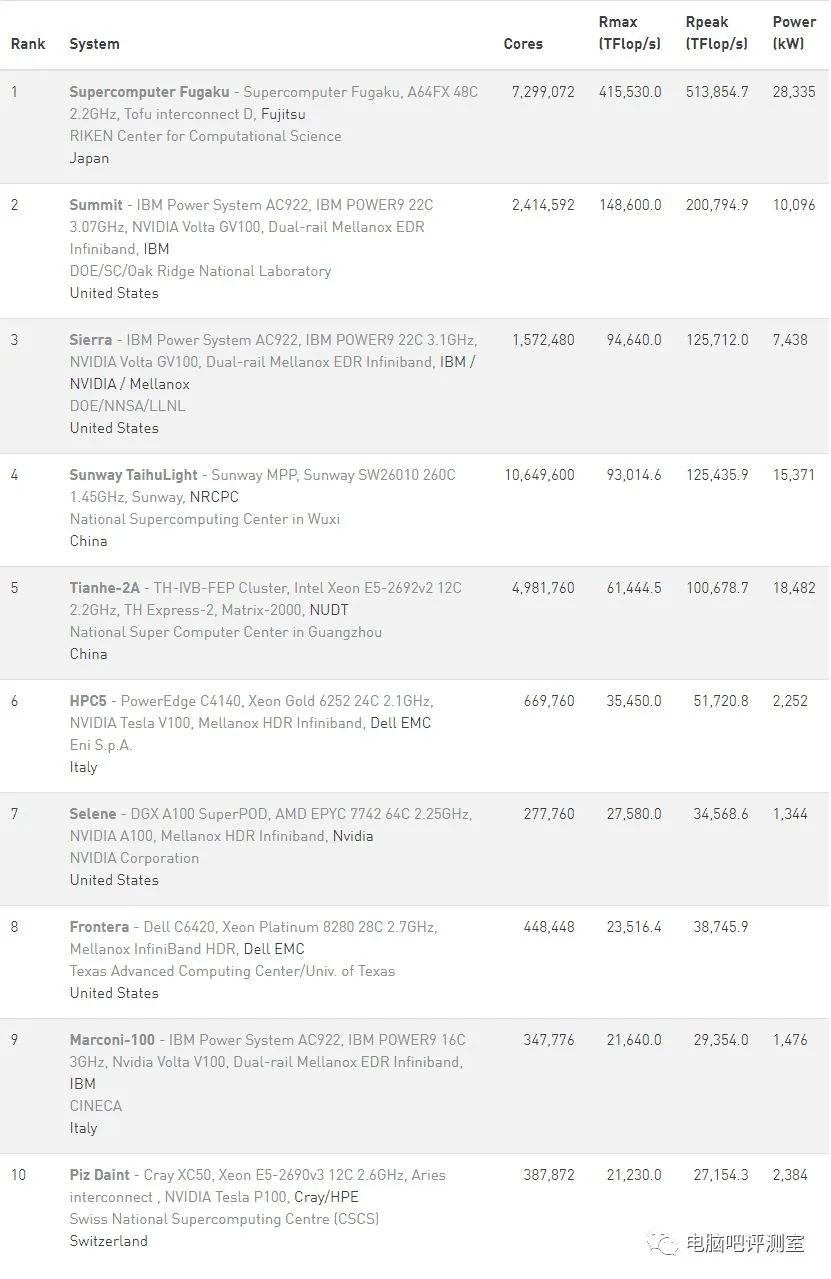
Fugaku uses 158,976 A64FX processors, which are optimized for computation based on the Arm v8-A architecture, featuring a 48+4 (48 cores for computation, 4 auxiliary cores) design.
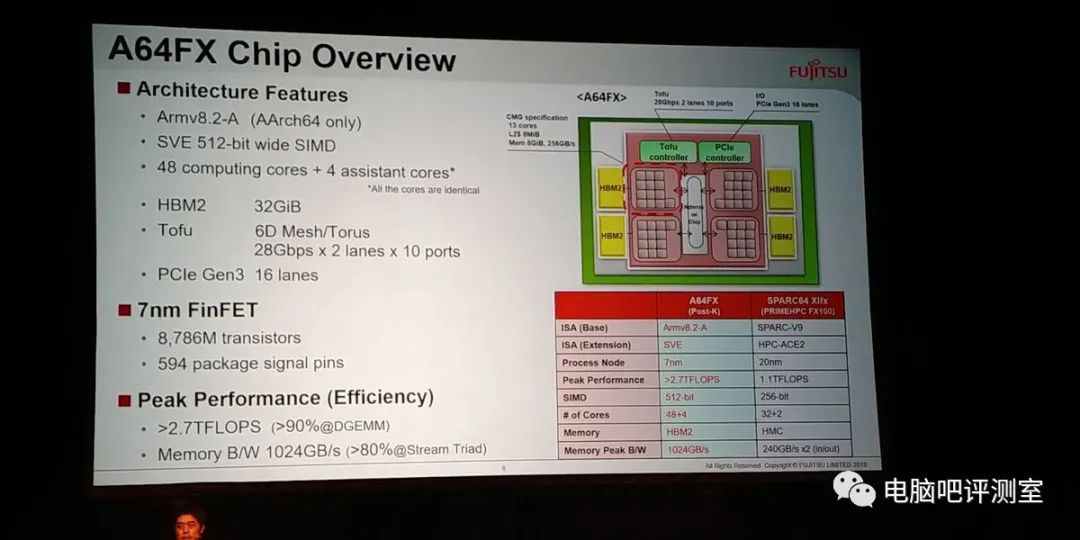
This is a significant breakthrough for ARM processors, as no ARM processor system has ever entered the TOP500 supercomputers, let alone the top 10. Therefore, this first-place achievement can be seen as a complete vindication of ARM processors against claims of weak performance.
To date, the A64FX is the only processor under ARM’s Scalable Vector Extensions (SVE). The goal of SVE is to allow ARM users to create hardware with vector units ranging from 128 bits to 2048 bits, enabling any software running on SVE to automatically scale.
Currently, Fugaku has processed computations including Japan’s COVID-19 tracking application, and in the future, supercomputing systems based on the A64FX processor will also be deployed in other countries.
Source: https://www.expreview.com/74833.html
This should be the highest achievement ever reached by ARM processors! ARM processors have finally created the most powerful computing machine in the world! However, this is all based on larger scale and higher power consumption. If traditional x86 supercomputers could also scale to the same size, they might be even stronger. Moreover, it is not hard to notice that other x86 supercomputers on the list are paired with Nvidia GPUs to accelerate computations, but “Fugaku” does not require any, which could be a breakthrough for ARM to surpass x86 in the future. At the same time, there are not many new supercomputers on the list that are paired with Nvidia A100 GPUs, so ARM’s top position may soon be challenged.
News 2: Ampere Releases 80-Core ARM Processor: Expected to Reach 128 Cores by Year-End
The ARM architecture is currently thriving, dominating not only the mobile sector but also making significant strides in data centers, cloud services, and high-performance computing. Many manufacturers have released multi-core, high-frequency ARM processors, and the world’s leading supercomputer is also based on ARM architecture, with Apple even using ARM architecture for its self-developed chips.
Today, Ampere Computing released its first-generation Altra series processors, aimed primarily at large cloud service providers, claiming to be the industry’s first 80-core native cloud processor family, with plans to reach 128 cores by the end of the year.
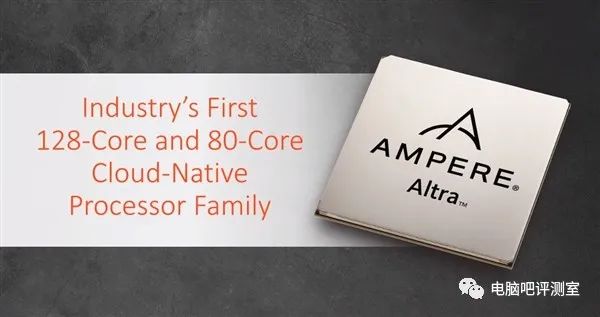
The Ampere Altra processor is based on the ARM Neoverse N1 enterprise-level core architecture, featuring four-issue superscalar out-of-order execution, supporting the ARM v8.2 instruction set, and incorporating some features from ARM v8.3 and v8.5. It has two SIMD 128-bit units, supporting FP16 floating-point and INT integer operations, and is manufactured using TSMC’s 7nm process.
All cores are interconnected via a mesh network, with each core having a 64KB level 1 instruction cache, a 64KB level 1 data cache, and a 1MB level 2 cache. All cores share a 32MB level 3 cache, and all cache levels support ECC.
Memory supports eight-channel DDR4-3200 ECC, with a maximum of two DIMMs per channel, totaling up to 16 DIMMs in a single socket, with a maximum capacity of 4TB.
It supports single-socket or dual-socket configurations, with each providing 128 PCIe 4.0 lanes, of which 32 are for interconnect and 96 are external. In dual-socket configurations, it can provide 192 PCIe 4.0 lanes.
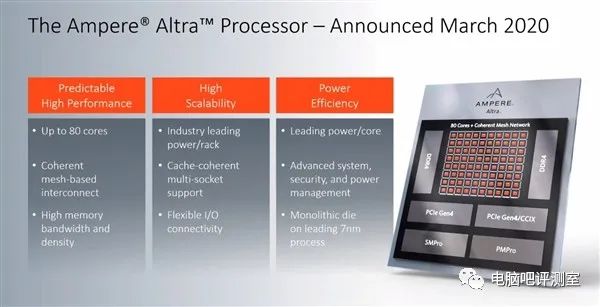
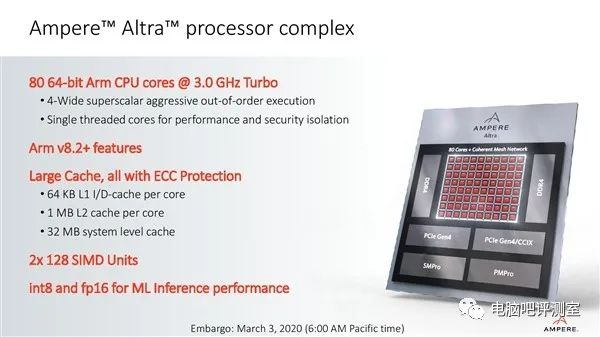
The Altra series offers up to 11 models, with model names that are exemplary in the industry, combining code names with core counts and frequencies for clarity. For example, the flagship model “Q80-33″ features 80 cores (80 threads) at 3.3GHz, with a thermal design power of 250W—”Q” corresponds to the code name “QuickSilver” (Marvel character Quicksilver).
Additionally, three other 80-core models are available at 3.0GHz/210W, 2.6GHz/175W, and 2.3GHz/150W, along with one 72-core, four 64-core, one 48-core, and one 32-core model, with the lowest thermal design power of 45W—if the 32-core model is fully populated with 4TB of memory, the thermal design power will rise to 58W.
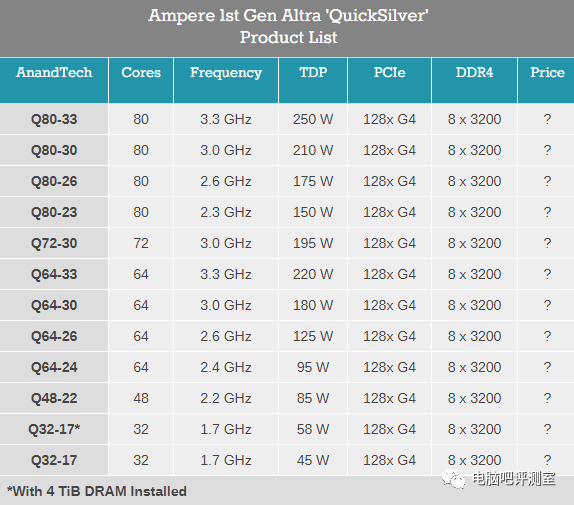
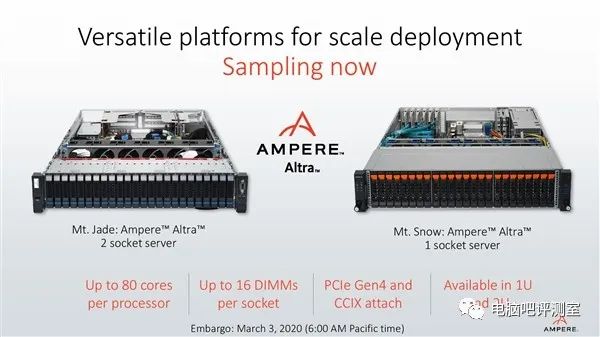
Next, Ampere will launch an enhanced version of the Altra Max series, code-named “Mystique” (Marvel character Mystique), featuring a new chip design, still using a mesh network, with a maximum core count of 128, while memory and PCIe specifications remain unchanged. Samples are expected in the fourth quarter, with mass production planned for mid-next year.
Looking ahead, Ampere is also designing a new second-generation “Siryn” (Marvel character Siryn), with an upgraded 5nm manufacturing process. The core count has been determined (not disclosed), and it is expected to support DDR5 and PCIe 5.0. Test chips have completed tape-out, with samples expected by the end of next year.
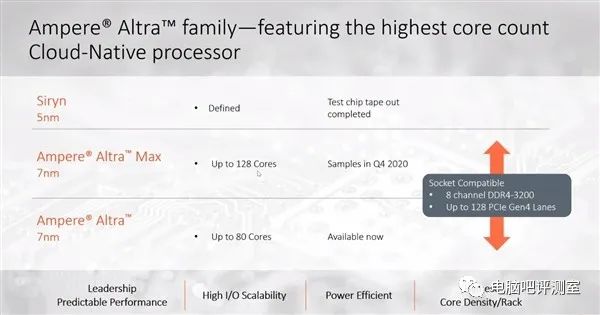
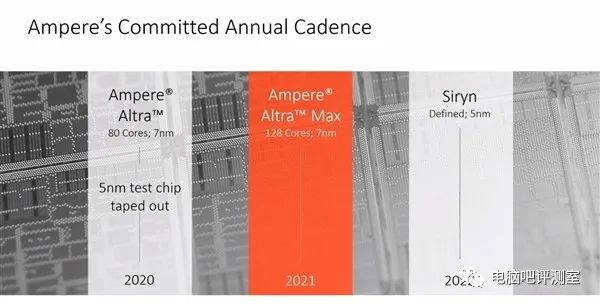
Original link:https://www.cnbeta.com/articles/tech/994809.htm
Moreover, the future potential of ARM may continue to increase! In fact, the news of the Ampere 80-core ARM processor was already teased back in March, and it has finally been released! It is worth noting that the strongest CPU in the x86 family currently has only 64 cores, so it is not an exaggeration to say that this processor surpasses all x86 processors in specifications! Furthermore, there will be even stronger specifications with 128 cores in the future! ARM has already made achievements in home PCs, supercomputers, and processors! It will be interesting to see what remarkable performances lie ahead!
News 3: AMD Zen Enters the Top 7 of the World’s Strongest Supercomputers, Partnering with NVIDIA Ampere Acceleration Cards
Recently, TOP500.org released the latest list of the world’s top 500 supercomputers. Japan’s ARM-based “Fugaku” reclaimed the world number one spot, while AMD’s Zen architecture has entered the top ten for the first time, ranking seventh. Historically, the supercomputer “Titan,” based on AMD Opteron 6274 16-core processors, once held the first place in 2012, paired with NVIDIA Tesla K20x acceleration cards, achieving a performance of 17.6PFlops (1.76 hundred quadrillion calculations per second), and still ranks 12th today.
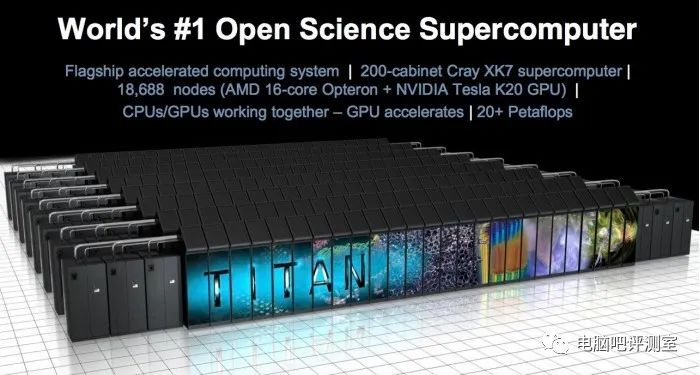
The supercomputer currently ranked seventh is “Selene” from the United States, equipped with 4,340 AMD EPYC 7742 64-core processors, totaling 277,760 cores, and utilizing NVIDIA’s latest Ampere architecture A100 acceleration cards, achieving a maximum performance of 27.58PFlops (2.758 hundred quadrillion calculations per second) and a peak performance of 34.57PFlops (3.457 hundred quadrillion calculations per second), with a power consumption of 1,344.19 kilowatts.
Additionally, it employs NVIDIA Mellanox HDR Infiniband interconnect architecture, 560TB of memory, and runs on Ubuntu 18.04.01 operating system.
Compared to Titan, its performance has improved by 57%, while power consumption has only increased by 16%.
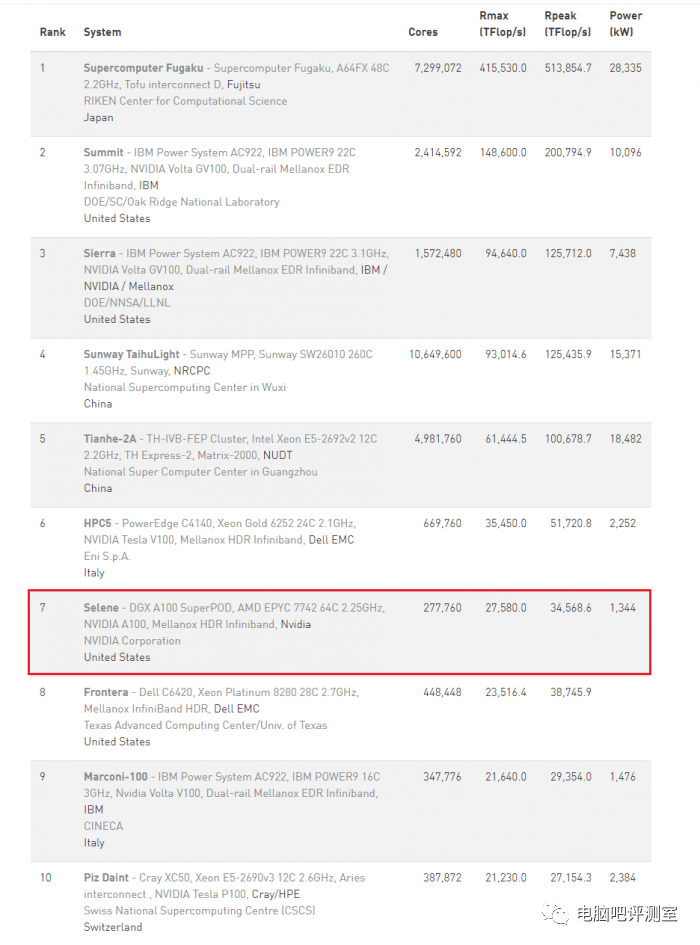
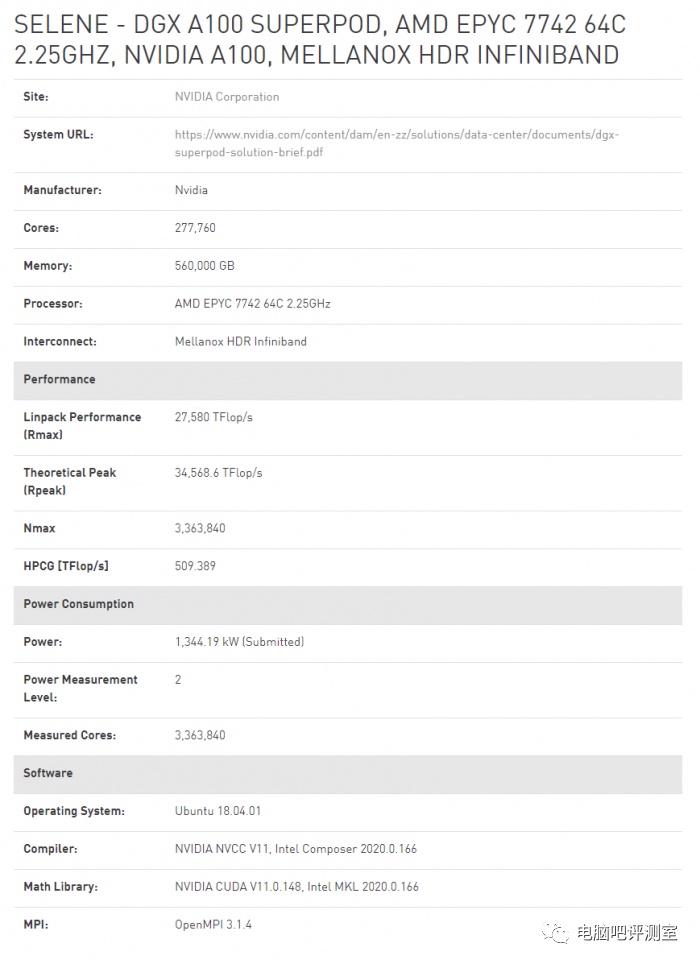
Interestingly, the first AMD Zen architecture supercomputer to enter the top 500 in November 2018 was not equipped with the first-generation EPYC Naples or the second-generation EPYC Rome, but rather a Chinese supercomputer using AMD Zen architecture licensed by Sugon, achieving a performance of 4.32PFlops, currently ranked 58th.
In November 2019, two first-generation EPYC and two second-generation EPYC supercomputers made the list, bringing AMD’s total to six.
Now, there are seven second-generation EPYC supercomputers on the list, bringing AMD’s total to 13.
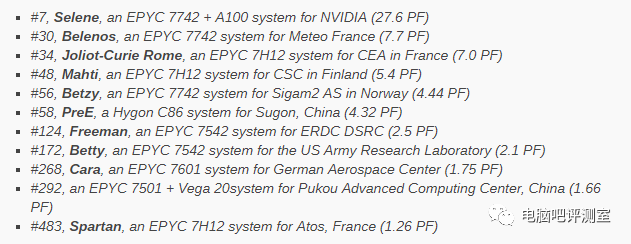
Looking ahead, AMD is also building two exascale supercomputers based on the Zen architecture for the United States. One is Frontier, which will use the future Zen architecture EPYC (expected to be the third-generation Milan) paired with Radeon Instinct acceleration cards, with a peak performance of 1.5EFlops (150 quintillion calculations per second), planned to go online in 2021 at Oak Ridge National Laboratory.
The other is El Capitan, which will use the fourth-generation Zen architecture EPYC (code-named Renoa) paired with Radeon Instinct acceleration cards, with a peak performance of 2.0EFlops (200 quintillion calculations per second), planned to go online in 2023 at Lawrence Livermore National Laboratory.
In comparison, the Aurora supercomputer, based on Intel’s scalable processors and Xe GPU acceleration cards, has a peak performance of only 1EFlops, scheduled to go online next year.
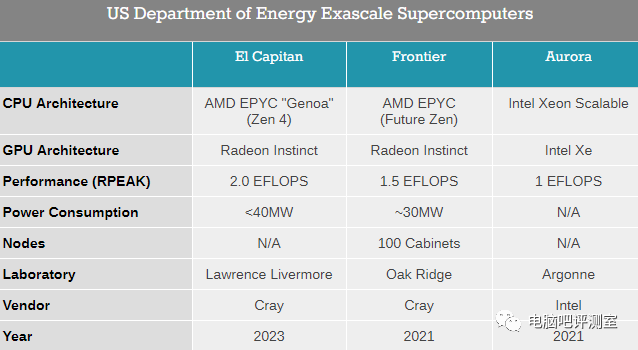
Original link: https://www.cnbeta.com/articles/tech/994671.htm
Although we mentioned in the first article that there are “not many new supercomputers paired with Nvidia A100 GPUs” on the performance list, there is indeed one notable supercomputer on the list. This supercomputer is similar to the personal supercomputer DGX A100 released by Nvidia, both using EPYC paired with GA100 GPU configurations, but this one is… scaled up by… several thousand times… However, it seems that while AMD has performance, its market share in the supercomputer field is still not large, as this is also Intel’s stronghold, and AMD still needs to continue its efforts!
Small questions in the background
Big questions ↓


Welcome to join the official computer bar group 5:820217939
Welcome to the second-hand hardware exchange group of the computer bar: 1079537679.
Follow Bilibili @Computer Bar Review Room, @Wing King or Weibo @Gradual Zhen JZ, @DDAA117
Note:
This article is reprinted from the internet (links above). Any images or logos appearing in this article belong to their legitimate owners; this article is for informational purposes only. If there is any infringement, please leave a message in this article.
The content and views expressed in this article do not represent the views of the Computer Bar Review Room.